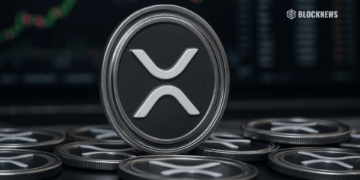- Toncoin value dropped over 25% after Telegram founder Pavel Durov’s arrest but rebounded by 15% within days.
- Technical patterns suggest Toncoin might see further declines due to bearish market formations.
- Legal challenges against Telegram in multiple countries are adding to market pressures on Toncoin.
Toncoin, the cryptocurrency associated with the messaging app Telegram, recently experienced a significant drop in market value, triggered by the arrest of Telegram’s founder, Pavel Durov. Following the initial decline, the cryptocurrency saw a partial recovery, yet market analysts predict potential further downturns based on current trading patterns and ongoing legal issues.
Market Fluctuations and Technical Analysis
After a steep 25% fall in value that saw Toncoin’s price dip to $4.45 on September 6, the digital currency managed a swift recovery to over $5.15 by September 9. Despite this rebound, technical indicators suggest that the cryptocurrency could be at risk of a continued decline. Analysts point to an “inverse cup-and-handle” pattern on the price charts, a typical bearish signal suggesting that the price could drop further.
This pattern indicates a potential 30% price decrease for Toncoin, with a possible downside target around $3.60. The pattern will be confirmed if the price fails to regain its previous support level, which has now turned into a resistance point.
Legal Challengengths Amidst Challenges
Despite these challenges, there are signs of resilience within the Toncoin ecosystem. Data from Santiment indicates that the largest Toncoin holders have been increasing their holdings following the arrest of Durov, suggesting a level of confidence among significant investors.
According to DeFi Llama, the total value locked (TVL) in the Toncoin ecosystem has seen growth during this turbulent period, buoyed by new projects like gaming and memecoin initiatives launching on the network. This continued development activity within the Toncoin ecosystem could provide some support to its market value, countering the negative impacts of the broader market and legal challenges.














